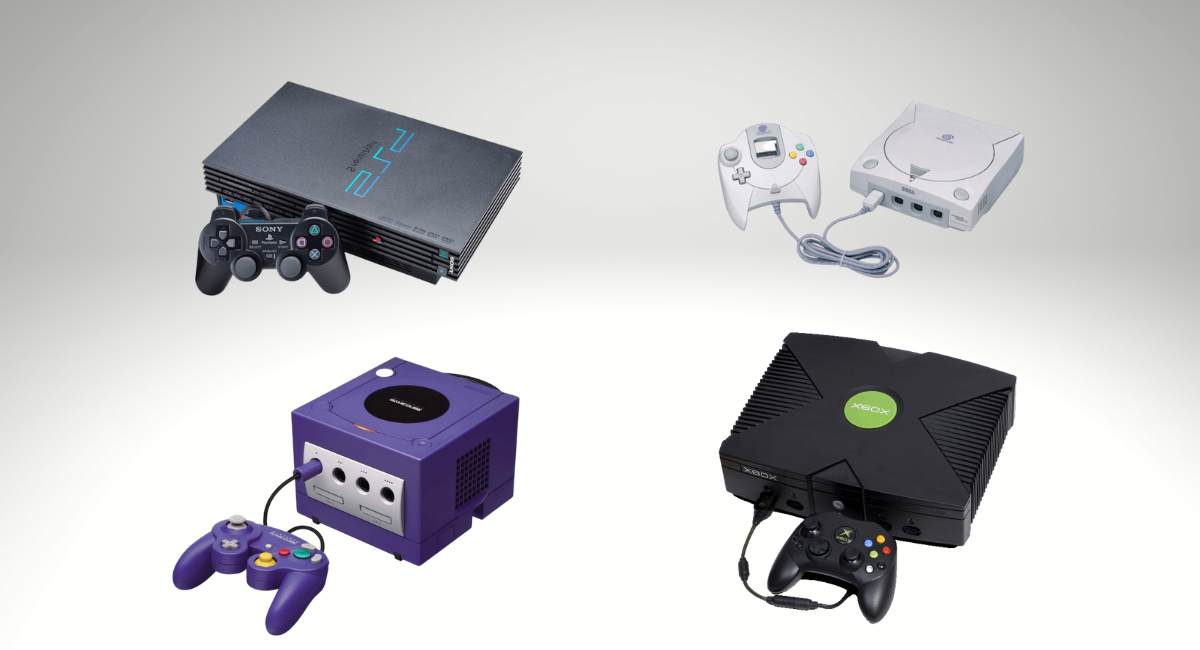
The sixth generation brought with it a refinement of 3D, making more detailed models, textures, and processing effects to give games more stylistic design. 2D was still strong, especially on Nintendo's Game Boy Advance, the last Nintendo system to completely dominate the portable market. It might seem pretty obvious to the majority of gamers and gaming fans out there, but video games have had many drastic changes over the course of the last 30 years.
From Wikipedia, the free encyclopedia
{{bottomLinkPreText}}{{bottomLinkText}}

This page is based on a Wikipedia article written by contributors (read/edit).
Text is available under the CC BY-SA 4.0 license; additional terms may apply.
Images, videos and audio are available under their respective licenses.
Cover photo is available under {{::mainImage.info.license.name || 'Unknown'}} license.Cover photo is available under {{::mainImage.info.license.name || 'Unknown'}} license. Credit: (see original file).
The Sixth generation of video game hardware (1998-2013) expanded the home console market. This era introduced online gaming. After SEGA's market failure with the SEGA Saturn, they released a new console in 1999 known as the Dreamcast. During the Dreamcast's development, Sony announced the PlayStation 2 which would be released one year later. The Dreamcast did well for 1999 and 2000, but SEGA couldn't compete with the PlayStation 2's DVD capability and growing game library, as well as the announcement of Microsoft's Xbox and Nintendo's GameCube. SEGA dropped out of the hardware market, and joined the 3rd party game designer business. The three consoles competed for the next five years until the next generation came to be.
| Part of a series on: |
| History of video games |
|---|
- Sixth generation (1998–2013)
|
| v·d·e |
| v·d·eSixth-Generation Hardware |
|---|
Arcade Cabinets·Arcade Consoles·Augmented Reality·Dedicated Consoles·Handheld Consoles·Home Computers·Home Consoles·Microcomputers·Microconsoles·Personal Computers & Laptops·Single-Board Computers·Smart TVs·Smartphones·Tablets·Virtual Reality | | Microsoft |
|---|
| Nintendo | Game Boy Advance·Game Boy Advance SP [Version 2] ·Game Boy micro·GameCube |
|---|
| SEGA |
|---|
| Sony | PlayStation 2 [Slimline] ·PSX |
|---|
| Others | GP32·N-Gage [QD] ·Neo Geo Pocket Color·Panasonic Q·Pokémon Mini·Tapwave Zodiac·V.Smile Pocket |
|---|
Video game hardware generations
First (1972-80)·Second (1976-92)·Third (1983-2003)·Fourth (1987-2003)·Fifth (1993-2005)·Sixth (1998-2013)·Seventh (2005-19)·Eighth (2012-)·Ninth (2020-) |
|
Sixth Generation Consolesthe History Of Video Games To Play
| v·d·eHistory of video games |
|---|
| By system | - Arcade game history
- Computer
- Electronic game
- Video game console history
- Handheld game systems
|
|---|
| By genre |
|---|
| Lists |
|---|
|
Sixth Generation Consolesthe History Of Video Games On
Retrieved from 'https://gamicus.gamepedia.com/Sixth_generation_of_video_game_hardware?oldid=95541'


 This page is based on a Wikipedia article written by contributors (read/edit).
This page is based on a Wikipedia article written by contributors (read/edit).